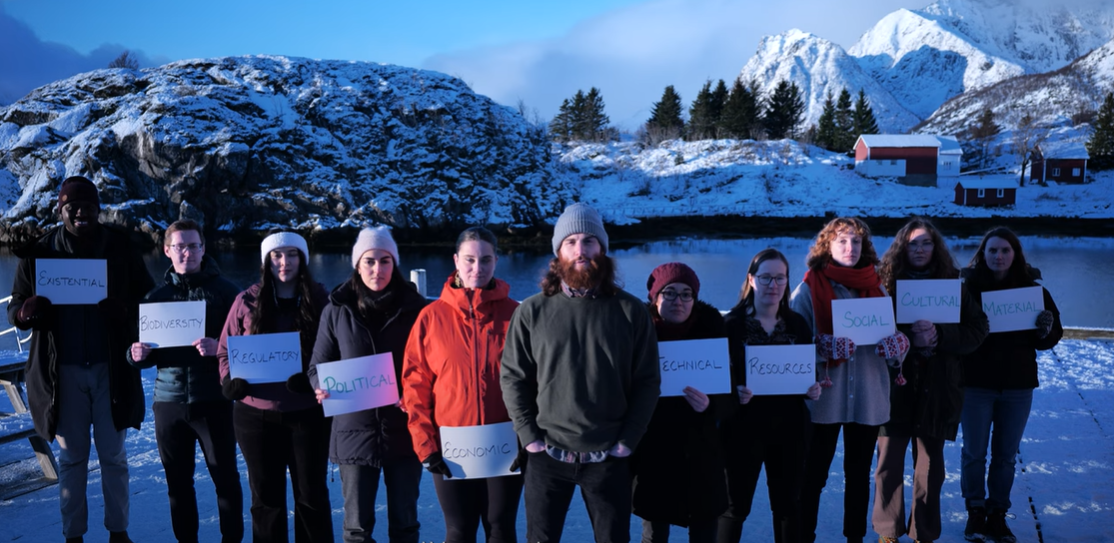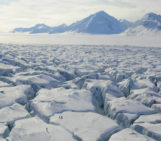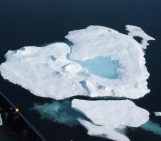
Here on the Cryoblog we often talk about the impacts of climate change in the Cryosphere. So now for something completely different: how does this fit into sustainable development in the Arctic? Here, I take you on a journey through the Arctic in a round-up of the recent Arctic Frontiers Emerging Leaders program, a unique early-career and mentoring program bringing together academic, industry, indigenous and policy representatives that took place in northern Norway.
The journey begins in Bodø
One month ago, 33 young professionals living and working across the Arctic and sub-Arctic recently began their journey in the city of Bodø, northern Norway, for this year’s Arctic Emerging Leaders program. Emerging Leaders is an immersive week-long early-career and mentoring program bringing together academic, industry, indigenous and policy representatives from diverse backgrounds to tell and learn about stories of the Arctic. Included in this group of future leaders were those who are seeing first-hand the devastating impacts of climate change on our Arctic and sub-Arctic communities.
This year’s overall theme was Green Shift: the transition to more sustainable energies, growth and development within the limits nature can tolerate to achieve our climate goals. We had the opportunity to hear insights on topics ranging from space and security, fisheries, energy, to Indigenous Peoples. For example, we heard from representatives of the Search and Rescue Joint Rescue Coordination Centre, the Sámi Parliament, the aquaculture industries, and the Norwegian Space Agency.
Aside from learning about Green Shift in the Arctic through these different perspectives, we were tasked with delivering content for the Arctic Frontiers conference in Tromsø, the gateway to the Arctic, where our journey would culminate. This content included brief outlook videos for several big debate sessions: ‘North on the Move’ and ‘Energy: Moving to Mixed Solutions?’, as well as a speech for the Townhall session ‘Governing Risks in Turbulent Times’.
Moving North
We spent the next five days together, travelling from Bodø to the Lofoten Islands (with some last-minute journey plan changes due to Arctic weather!), where discussions about green shift in the Arctic continued and we prepared and filmed materials for the conference. We took the Hurtigruten coastal ferry to Tromsø overnight, where we were even treated to a showing of the northern lights!

Arctic weather changing our travel plans: Emerging Leaders travelling to the Lofoten Islands by bus instead of the Hurtigruten ferry! [Credit: Naima El bani Altuna]

Arctic Emerging Leaders 2023 in Kabelvåg, Lofoten Islands [Credit: Arctic Frontiers]
Rapidly changing Arctic
The High North, comprising the eight Arctic states Norway, Denmark, Finland, Iceland, Sweden, Canada, the United States and the Russian Federation, is not isolated politically nor scientifically, and the war in Ukraine has heightened its international and geopolitical importance. The current ongoing conflict in Ukraine loomed large over this year’s conversations. In the same way that ‘what happens in the Arctic doesn’t stay inside the Arctic’, what happens outside the Arctic doesn’t stay outside of the Arctic. The Arctic Council, the leading intergovernmental forum promoting cooperation in the Arctic, is currently on hold by the seven western Arctic states because of Russia’s war against Ukraine. There is now a deep mistrust between the western Arctic nations and Russia which threatens decades of progress and long-standing research collaborations, programs and data accessibility. It is unknown what the lasting impacts and setbacks to science in the Arctic will be, particularly on climate research recording Arctic glacier retreat, sea ice retreat, permafrost thaw and biological shifts. As the Arctic is the fastest-warming region on the planet, there is great concern that the war is diverting attention from understanding the accelerating pace of change in the Arctic and its implications for communities, development and industry across the region.
Fostering connections and supporting constructive dialogue between communities, researchers and individuals is ever-more important. While the war has suspended scientific cooperation between Arctic nations and has closed scientific diplomacy channels, cooperation remains in other forms. For example, bilateral fisheries agreements between Norway and Russia continue. There is perhaps some light at the end of the tunnel, therefore, to restart cross-border scientific collaborations.

Emerging Leaders filming their Brief Outlook video for the Arctic Frontiers Big Picture session on climate change and the green energy transition in the Arctic [Credit: Arctic Frontiers].
‘Nothing about us without us’
Despite the key role of the Arctic in the current climate crisis, the rapid rate of observed changes is still outpacing the green energy transitionThe shift to greener, more renewable energy sources is not a simple path. The energy ‘trilemma’ – ensuring energy security, equitable access to energy, and achieving environmental sustainability – is challenging and brings its own conflicts with traditional Indigenous land use practices and rights. For example, Jon Petter Gintal from the Sámi Parliament highlighted the double-burden on existing reindeer herder lands from new wind farm developments and from more frequent rain-on-snow events preventing reindeer from feeding on the tundra. Reconciling Indigenous livelihoods versus the shift to greener energies in the context of a rapidly changing Arctic is a key challenge.
In Arctic Canada, 70% of remote communities still operate on diesel generators, and most northern settlements are not connected to the main power grid. Despite this, the transition to more sustainable, mixed solutions is slow. This infrastructure deficit requires funding and capacity building if Arctic communities are to play an active part in the green shift. The Arctic has high mineral potential for the production of low-carbon technologies, but I learnt that we need to balance the environmental and societal risks of mineral extraction with our need for critical metals like lithium, cobalt, and copper in the green economy.
While the many discussions throughout the Emerging Leaders program highlighted the vast work to be done, it also emphasized the adaptability, resilience, resource management, flexibility and collaboration of those living in this complex and rapidly changing part of the planet. I think we agreed as emerging leaders that these should be drawn upon in the context of the current conflict to address the stark challenges facing the Arctic.
Key takeaways
The three key recurring messages that kept resurfacing throughout the Emerging Leaders program and Arctic Frontiers conference were:
- The need for prioritising pan-Arctic cooperation is critical, especially reopening scientific communication channels between Russia and the rest of the Arctic. Currently, decades-long collaborative relationships are on hold, including for long-standing scientific projects monitoring the effect of climate change on the rapidly-changing Arctic. Rebuilding trust between those working in the Arctic is key.
- The need for clear communication and accessibility of the latest scientific research and data outputs to those in industry and policy for informed decision-making.
- The inclusion of Indigenous voices and access rights in the Arctic green energy transition and the need for greater emphasis on communication, consultation and informed consent.
Further reading
- Profiles for this year’s Emerging Leaders
- Emerging Leader Videos for Arctic Frontiers Big Picture sessions
- The Arctic Monitoring and Assessment Programme: an Arctic Council Working Group Providing reliable and sufficient information on the status of, and threats to, the Arctic environment.
- The Arctic Council: The leading intergovernmental forum promoting cooperation in the Arctic
Edited by Ugo Nanni and Loeka Jongejans
 Jenny Arthur (she/her) is a polar scientist and researcher in glaciology and remote sensing at the Norwegian Polar Institute, specialising in Antarctic surface meltwater and ice-shelf dynamics. Her PhD research used satellite remote sensing to investigate supraglacial lakes on the East Antarctic Ice Sheet. She tweets as @AntarcticJenny and is part of the @EGU_CR blog team and the @APECS Council. Contact Email: jennifer.arthur@npolar.no
Jenny Arthur (she/her) is a polar scientist and researcher in glaciology and remote sensing at the Norwegian Polar Institute, specialising in Antarctic surface meltwater and ice-shelf dynamics. Her PhD research used satellite remote sensing to investigate supraglacial lakes on the East Antarctic Ice Sheet. She tweets as @AntarcticJenny and is part of the @EGU_CR blog team and the @APECS Council. Contact Email: jennifer.arthur@npolar.no





